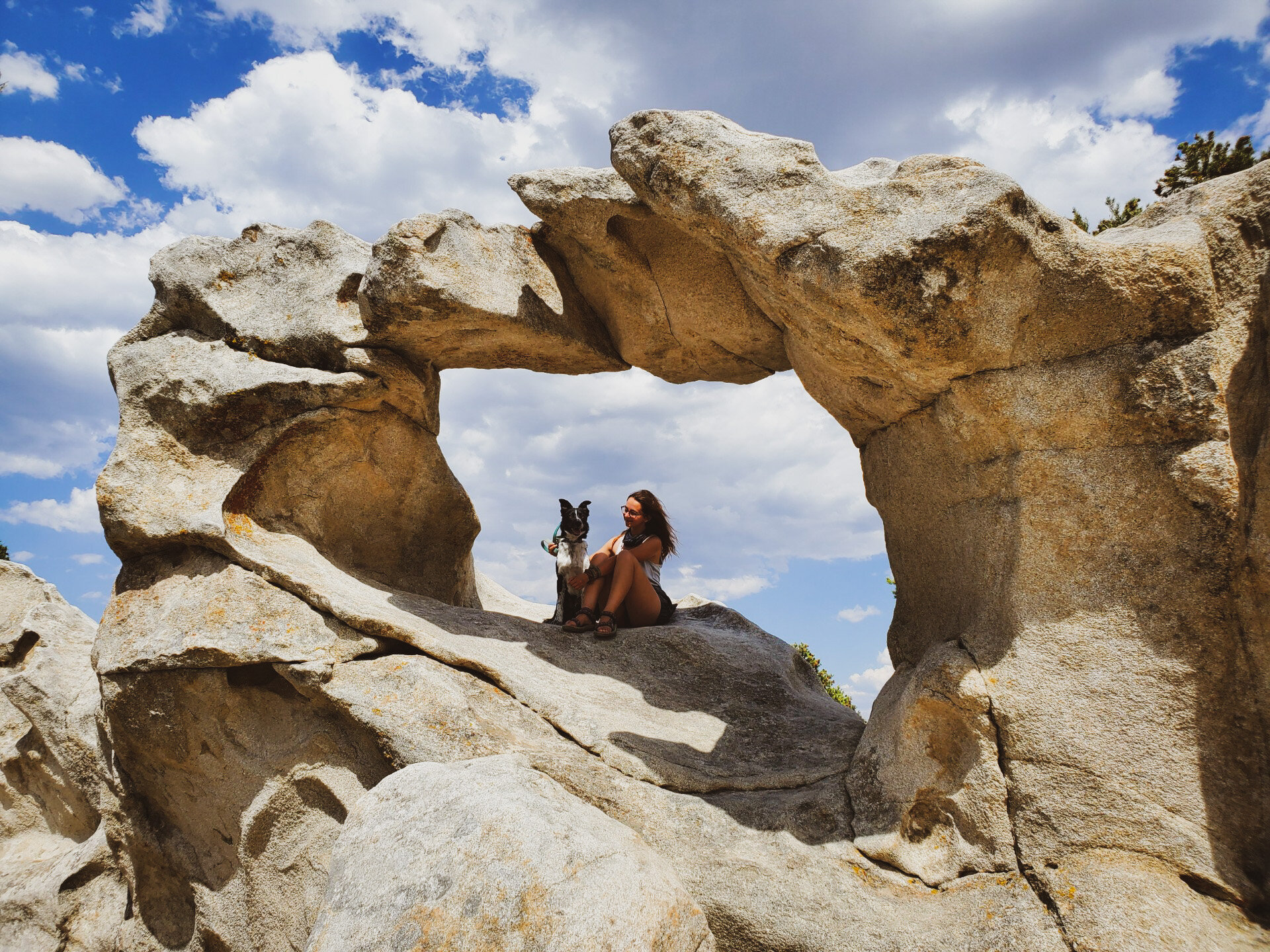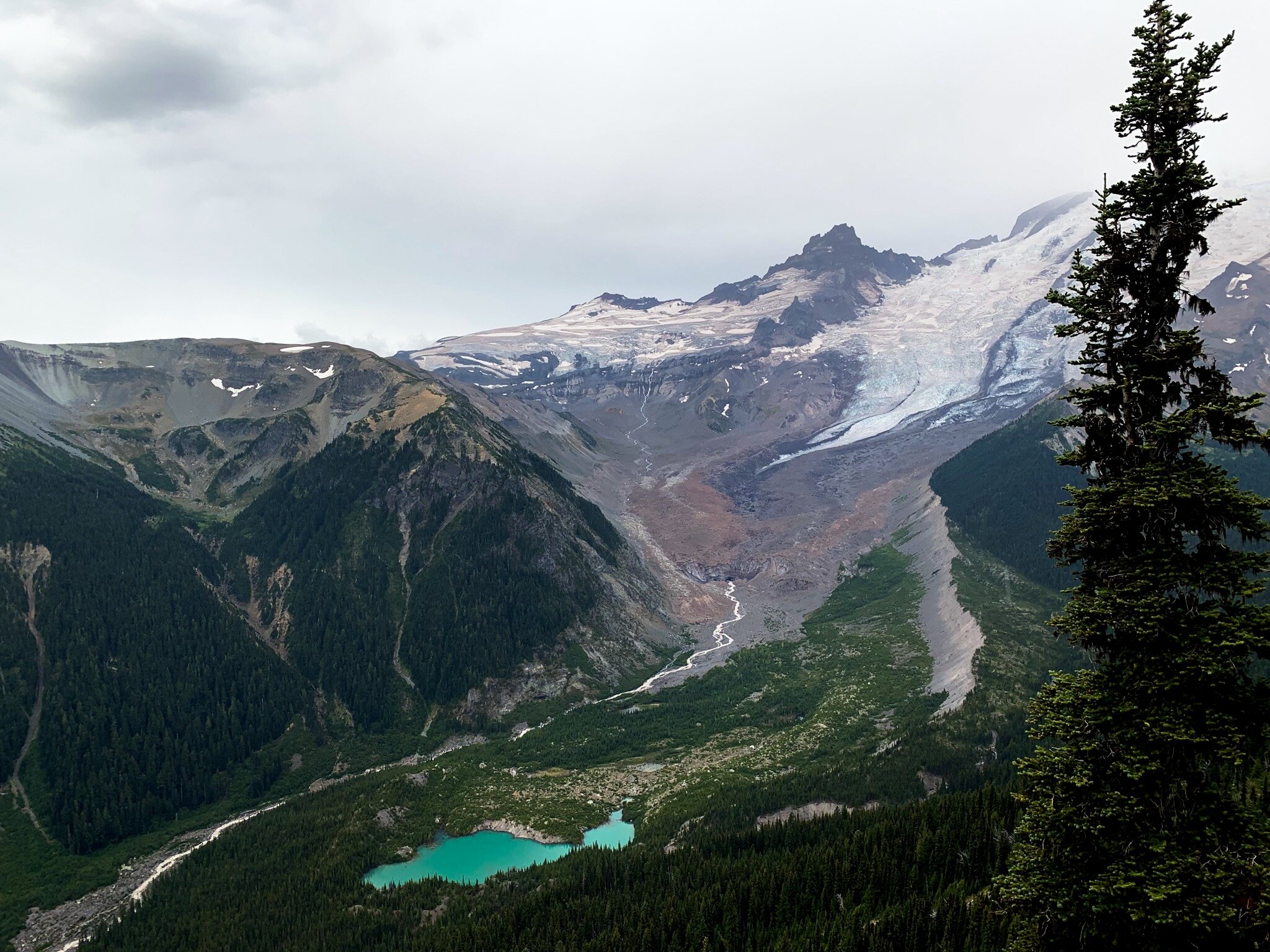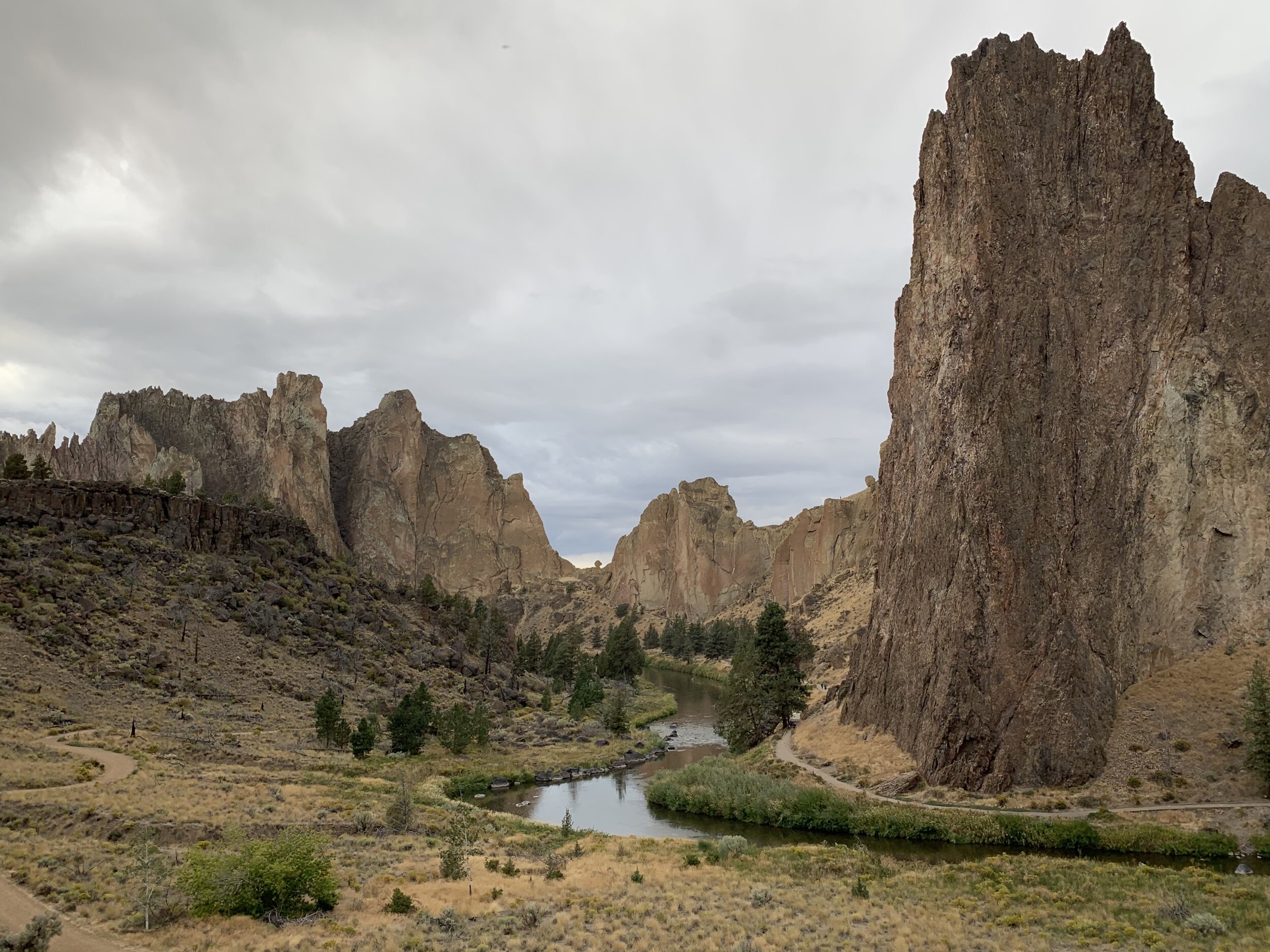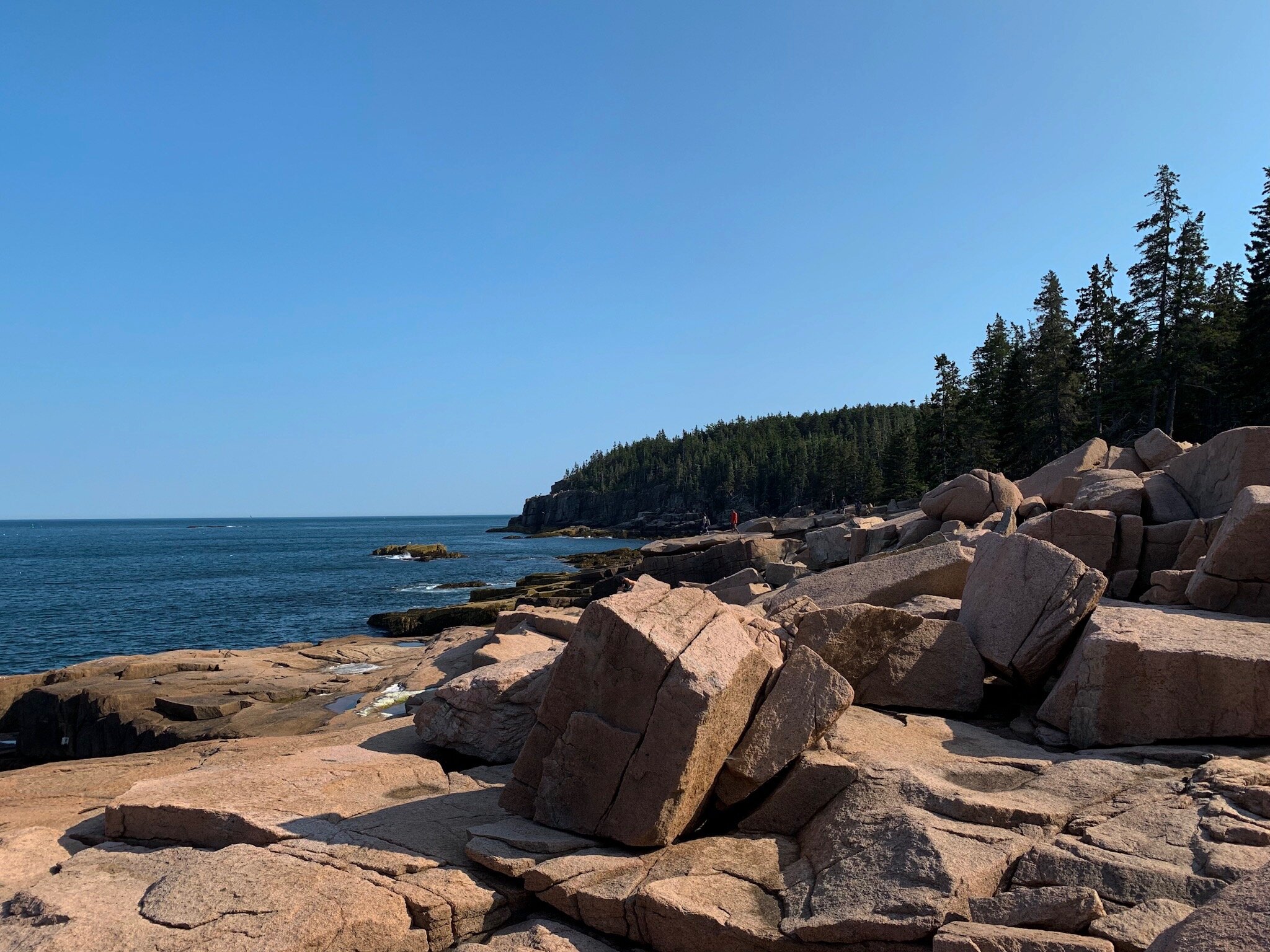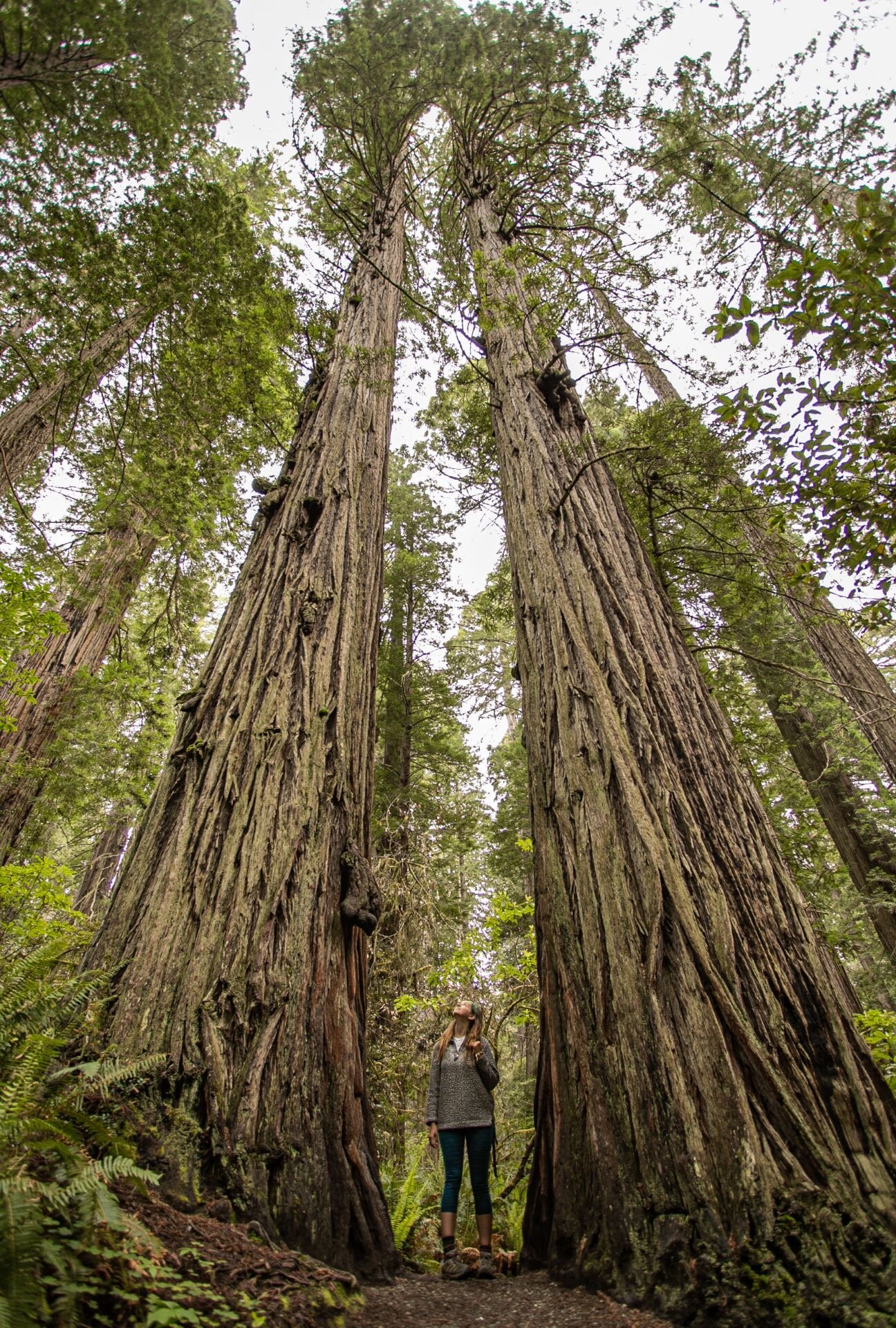Last week, we had the privilege of exploring, in full, one of the most beautiful states in the country: Idaho. Idaho is incredibly underrated, so I went on a mission to find the most beautiful places in the state. We explored the Sawtooths, saw Shoshone Falls, and even witnessed a meteor fall over the highway during one of our drives, but the one place that truly stands out to me when it comes to Idaho is a small natural reserve right on the Utah state line called City of Rocks.
City of Rocks is a National Park Service run site that is known for its rock climbing, historical significance, and giant natural features. But on top of that, it is also one of the most dog friendly NPS sites in the country. Dogs are allowed everywhere with their owners here, as long as they are kept on a leash no longer than 6 feet. So this means that all hiking trails and rock climbing areas are ones where your pup can hang out with you.
This was such a relief to us. We love the National Parks, but it’s hard to visit them with a dog sometimes. We find ourselves skipping a lot just because we don’t want to leave our border collie, Lassen, in the van, especially during the summer when it’s so hot. We were more than happy to hike with him on leash during our time there because we feel that it’s a privilege that he’s allowed at all.
City of Rocks quickly became a super memorable place for me, and it’s one that I think everyone should add to their western US bucket list. So, tell me, after you read this post, has Idaho made your must-see list yet?
The Twin Sisters
A little bit about Leave No Trace
Before visiting any park, it’s important to remember our Leave No Trace Principles. More detail on this can be found in these two articles: HERE and HERE, but the general rule is to leave the place better than you found it and respect those around you. That respect also goes for the park itself, and the rules they have in place. While this is a dog friendly park, that doesn’t mean your dog can run the place. The largest violation of rules and LNT principles the park encounters is people letting their dogs off leash. It’s important to respect their leash rule, and keep your dog under control, so that dogs can continue to be allowed in the park in the future.
View from the visitor center at City of Rocks National Reserve
A City of Geology
City of Rocks is a fairly small park that is often explored in conjunction with its sister park: Castle Rocks State Park. City of Rocks is free to visit, but is made up of a long, unpaved loop road that will take you to all of the sites. Camping is available in the park, but they do take reservations (so check recreation.gov before visiting if you plan on camping in the park).
The park is made up of endless iconic rock features, the most noticeable being the Twin Sisters. While they are not really twins (the one on the left is much older), they are still a must see within the park, and one of the best places to stop for a photo or lunch.
As you drive through the park, you’ll also come across what is known as their “Inner City.” This is where you’ll drive through the most rock formations, and where you can stop and see rocks such as Parking Lot Rock and the Window Arch.
This park is known for its climbing culture, so if you’re a climber, plan on spending a few days out here, weather permitting. With endless routes to climb, you’re sure to be in climbing heaven.
Window Arch in City of Rocks National Reserve
A Deep History
City of Rocks is home to over 6 miles of the historic California Trail, upon which over 200,000 people traveled between the times of the Gold Rush and the building of the Transcontinental Railroad. This place was a landmark for those passing through, and throughout the park, you can see their signatures still staining the rock in axle grease, so keep an eye out as you drive the park’s loop, and see which names you can find throughout your trip.
(disclaimer: please do not add your name to the rocks. It is disrespectful to the park’s history and violates park rules and Leave No Trace guidelines. If you cannot respect the place you are visiting, please choose to visit virtually instead).
Putting Idaho on the Map
Idaho technically does not have any National Parks with Park status. It holds a small sliver of Yellowstone, but as most of the park lies in Wyoming, it’s hard to give Idaho its credit. That being said, Idaho has so many beautiful NPS sites that hold Monument or Reserve status, such as City of Rocks, Craters of the Moon, and Hagerman Fossil Beds. Idaho is full of natural wonders, and is so much more than just a farming state. If it isn’t on your list yet, it absolutely should be.
Axle Grease Signatures on the rocks
Need help planning a road trip through the West? I’ve been road tripping for years, and I’d love to answer your questions directly and plan your trip for you. To get on the phone with me and discuss your trip, head over to my Patreon and sign up for at least one month of road trip resources (plus you get a pretty cool sticker just for joining).







